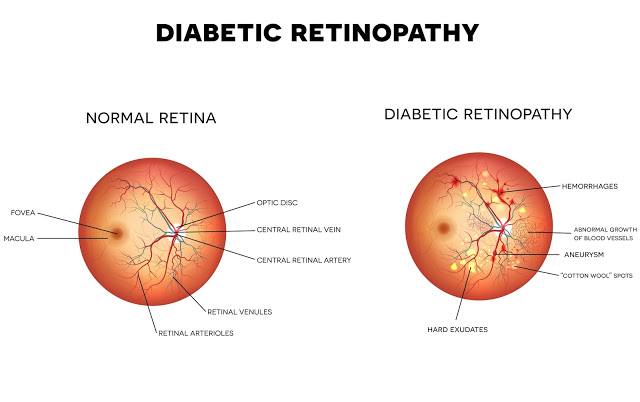Diabetic eye disease is a group of eye conditions that can affect people with diabetes.
- Diabetic Retinopathy affects blood vessels in the light-sensitive tissue called the retina that lines the back of the eye. It is the most common cause of vision loss among people with diabetes and the leading cause of vision impairment and blindness among working-age adults.
- Diabetic Macular Edema (DME) A consequence of Diabetic Retinopathy, DME, is swelling in the central area of the retina called the Macula.

Diabetic eye disease also includes Cataract and Glaucoma:
- Cataract is a clouding of the eye’s lens. Adults with diabetes are 2-5 times more likely than those without diabetes to develop cataract. Cataract also tends to develop at an earlier age in people with diabetes.
- Glaucoma is a group of diseases that damage the eye’s optic nerve—the bundle of nerve fibers that connects the eye to the brain. Some types of glaucoma are associated with elevated pressure inside the eye. In adults, diabetes nearly doubles the risk of glaucoma.
All forms of diabetic eye disease have the potential to cause severe vision loss and blindness.
However, early detection, timely treatment, and appropriate follow-up care of diabetic eye disease can protect against vision loss.

